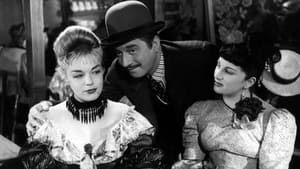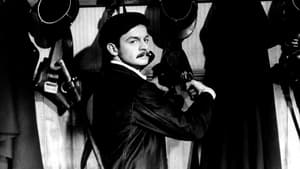Contact: [email protected]
Video Sources 0 Views

Synopsis
[ez-toc]




Introduction
In the realm of classic French cinema, one film stands as an enduring masterpiece: Casque d’Or Colorized (1952). A timeless tale of love, betrayal, and the criminal underworld, Casque d’Or has recently undergone a fascinating transformation, shedding its black and white origins to embrace the vibrant world of color. In this article, we embark on a journey through the history and significance of Casque d’Or Colorized, exploring the impact of colorization on the film’s visual narrative and delving into the debates surrounding the restoration of old movies.
Read Media File Transfer Agreement: Terms and Conditions
Read FAQ
The History and Significance of Casque d’Or Colorized
Casque d’Or Colorized is a classic French film directed by Jacques Becker, featuring the remarkable talents of Simone Signoret and Serge Reggiani. Set in the Parisian criminal underworld of the early 20th century, the film tells the tragic story of a love affair between Marie (Signoret), a beautiful and charismatic woman, and Manda (Reggiani), a notorious criminal. As the narrative unfolds, the film weaves a complex web of emotions, loyalty, and betrayal, leaving an indelible mark on the history of French cinema.
Simone Signoret’s performance as Marie is nothing short of captivating. Her ability to convey a wide range of emotions, from innocence to anguish, adds layers of depth to the character. Serge Reggiani, in the role of Manda, complements Signoret’s brilliance with his brooding intensity, creating a cinematic pairing that resonates with audiences even decades later. Casque d’Or not only showcases the criminal underworld but also explores the complexities of love and human nature.
The Artistic Vision of Casque d’Or Colorized: From Black and White to Color
The original black and white cinematography of Casque d’Or Colorized is a testament to the artistic brilliance of director Jacques Becker. The monochromatic palette enhances the film’s noir aesthetics, creating a stark and atmospheric portrayal of the criminal milieu. The use of shadows and contrasts contributes to the film’s visual allure, immersing the audience in a world of moral ambiguity and forbidden passion.
The decision to colorize Casque d’Or Colorized introduces a new dimension to the film’s artistic vision. The once-muted shades burst into life, revealing the vibrancy of the period’s fashion and architecture. The cobblestone streets of Paris, once draped in shadows, now showcase a kaleidoscope of hues. The colorization process breathes fresh life into the film, making it more accessible to modern audiences while staying true to its original narrative essence.
The Process of Colorizing Casque d’Or Colorized 1952
Colorizing a classic film involves a delicate balance between preserving the original visual intent and introducing contemporary enhancements. In the case of Casque d’Or Colorized, the colorization process was executed with meticulous precision. Using advanced digital technology, the filmmakers carefully added color to each frame, paying homage to the film’s historical setting and maintaining the integrity of the original cinematography.
The challenge lay in ensuring that the colorization did not overshadow the film’s emotional depth and narrative impact. Technological advancements allowed for a nuanced approach, with attention to detail in recreating the textures and tones of the period. The result is a colorized version of Casque d’Or Colorized that seamlessly integrates with the film’s noir aesthetic, enhancing rather than detracting from its visual allure.
Analyzing the Impact: Color vs. Monochrome in Casque d’Or Colorized
The introduction of colorization in Casque d’Or Colorized raises intriguing questions about the impact on the film’s visual narrative and mood. How does the addition of color affect the viewer’s experience, and does it enhance or alter the film’s atmospheric qualities?
Comparative studies of key scenes in both the original and colorized versions provide insights into this transformation. For instance, the dimly lit interiors of criminal hideouts take on a new dynamic with the play of colors, offering a different perspective on the characters’ interactions. The use of color adds a layer of complexity to the visual storytelling, providing nuances that were previously hidden in the shadows.
The Debate Over Colorizing Old Movies
The debate surrounding the colorization of classic films is a longstanding one. On one hand, advocates argue that colorization breathes new life into old movies, making them more appealing to contemporary audiences. It provides a bridge between the past and present, inviting a new generation to appreciate the cinematic gems of yesteryear.
Conversely, purists contend that colorization compromises the artistic integrity of the original work. The distinctive visual language of black and white cinematography, they argue, is an essential part of the film’s identity. Colorization, in their view, risks diluting the intended impact and altering the filmmaker’s original vision.
Casque d’Or Colorized, with its recent colorization, becomes a focal point in this ongoing debate. Where does it stand in the delicate balance between preservation and modernization? As audiences grapple with the implications of colorization, the film serves as a case study in navigating the evolving landscape of cinematic restoration.
Preserving Cinematic Heritage: Balancing Restoration with Modernization
The challenge of preserving cinematic heritage lies in finding the delicate balance between restoration and modernization. While the original format of a film holds historical and artistic value, technological advancements offer opportunities to make these cinematic treasures more accessible to a wider audience.
Casque d’Or exemplifies the potential success of this delicate balancing act. The colorization process, when executed with respect for the original work, can open doors to new generations of cinephiles. It serves as a bridge between the past and the present, ensuring that classic films remain relevant and appreciated in a rapidly evolving cinematic landscape.
Film preservation goes beyond safeguarding physical copies; it involves adapting to the changing needs and preferences of audiences. Casque d’Or‘s colorization serves as a testament to the evolving nature of film restoration, where technology becomes a tool for both preservation and adaptation.
The Enduring Beauty of Casque d’Or: Beyond its Visual Presentation
Beyond the visual spectacle, Casque d’Or resonates with audiences for its timeless themes and cultural significance. The exploration of love, loyalty, and betrayal transcends the film’s aesthetic presentation, making it a cinematic masterpiece that continues to captivate hearts.
As we immerse ourselves in the colorized version of Casque d’Or, let us not forget the enduring beauty of its narrative. The film’s legacy extends beyond its visual transformation, leaving an indelible mark on the annals of French cinema. It reminds us that the power of storytelling remains unchanged, regardless of the palette in which it is presented.
Conclusion: The Lasting Impact of a Cinematic Masterpiece
In the vibrant world of cinema, Casque d’Or Colorized 1952 emerges as a shining example of how classic films can be revitalized for contemporary audiences. The colorization process, when done with care and precision, breathes new life into the noir aesthetics of the original, offering a fresh perspective without compromising the film’s integrity.
As we reflect on the journey of Casque d’Or, from its black and white origins to its technicolor revival, we appreciate the delicate dance between preservation and modernization. The film stands as a beacon, guiding us through the intricate tapestry of cinematic history, reminding us that even the classics can evolve while retaining their timeless allure.
In the end, Casque d’Or Colorized 1952 is not just a film; it is a testament to the enduring magic of storytelling, capable of transcending time and captivating generations. As we celebrate this cinematic masterpiece in its colorful reincarnation, let us embrace the ever-evolving landscape of film restoration, preserving the past while ushering in the future.













